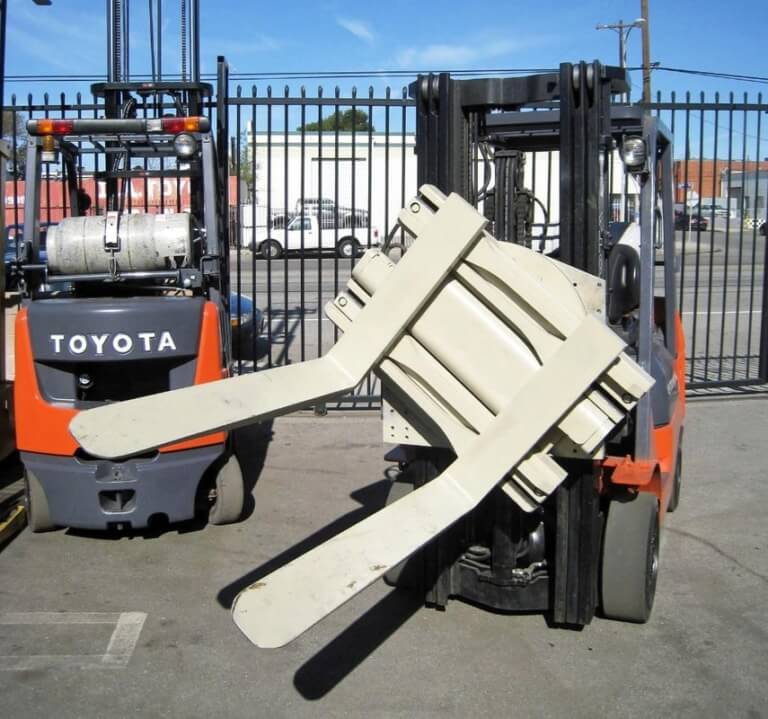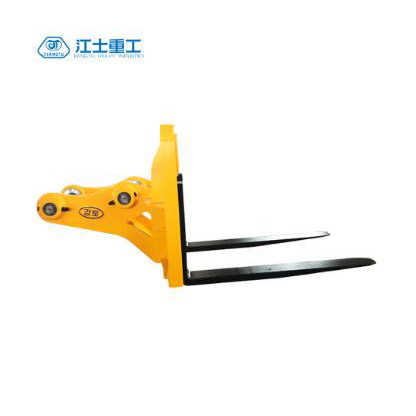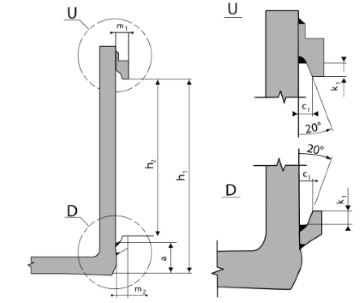

The forklift fork pin can be a latch or button (mushroom) type. Positioned on the top hook and used to position the forks on the forklift carriage. Hook: The hooks are the elements on the shank that support the forks on the forklift.Heel: Part of the fork where the shank and blade meet.Tip: The end of the blade that is inserted into the load.Forklift blades: Horizontal part of the fork which lifts and supports the load.Forklift Fork dimensions Forklift fork dimensions and specifications They are an integral part of the forklift and ensuring you are using the correct ones and that they are in good condition is essential to both the safety of personnel, but also the forklift and the load. Visit Budget online at or give us a call at 91.Forklift Fork dimensions: Forklift forks, also known as tines or blades, are used to lift and carry loads.
#Fork lift forks iso#
Premium quality forklift forks should meet or exceed all ANSI/ITSDF and ISO standards.īudget Attachments and parts is a leading online retailer of replacement fork tines and attachments for skid steers, forklifts, wheel loaders, telehandlers, and more. In addition, forks that are fully immersed into industrial heat treatment ovens and cooling pools are the most durable. How do I determine quality?įorks made from high quality boron-carbon alloy high strength steel are rated 20 per cent stronger than those made with 40CR. Always contact your fork provider first when in need of modification. It is typically recommended that only the fork manufacturer make repairs or modifications to ensure forks meet safety standards. Is it ok to make custom repairs or modifications? “Replacing just one fork may seem like a good idea, but can actually lead to serious safety violations.” says Terry Melvin, CEO of Arrow Material Handling Products. Having two different forks with unique amounts of wear and disproportionate hourly usage is provides a number of safety concerns. It is highly recommended forks be replaced only in pairs to ensure equal performance. While only a single fork might show signs of excessive wear or damage, it is not safe to replace only one fork. When it does come time to replace forklift forks, here are some common questions” Can a single fork be replaced or should they be replaced in pairs?

Operating without a fully functional positioning lock is a safety hazard and illegal. If a positioning lock is no longer capable of locking completely due to wear the forks should immediately be removed from duty until the part is replaced. Furthermore, if the wear to the hook is causing an excessive amount of distance between the fork and the carriage, the hooks should be replaced.

Noticeable wear, crushing, pulling and other deformities are signs that the fork hooks need to be replaced. is a sign that both forks need to be replaced. Any difference in fork height beyond 1.26 in. long, the allowable difference in fork height would be 1.26 in. Therefore, if the forks in question are 42 in. Difference in fork blade heightĪ difference in the height of each fork blade should stay within three per cent of the fork length. If any bend or uneven surface is detected on either the blade or shank, the fork need replacing. Any bends or uneven surfaces on the forkĪll forks are delivered with a 90-degree angle from the shank to the blade. Since fork tips are usually the first part of the fork to come in contact with material, excessive wear or damage to the tips is a clear indicator the forks should be replaced. Even small cracks and gouges are signs forks need to be replaced. The fork heel and parts of the fork closest to the machine typically receive the most wear. Fractures due to stress or collisionīe sure to inspect the forks closely for fractures and gouges. Forks that show this amount of wear should be replaced. However, any wear to the fork of more than 10 per cent of the total thickness is considered excessive. Here’s what to look for: Excessive wear to the forksĪ Forklift fork will decrease in thickness over time due to normal wear. As part of the pre-operation visual inspection, forklift forks should be inspected for signs of cracks, bends, excessive wear or damage to either the fork tine or the positioning lock when using an ITA mounted fork. In addition to visual inspections, federal law mandates a more thorough annual inspection be carried out by a trained professional, typically a forklift service provider.
#Fork lift forks how to#
Many are unaware of how often one should inspect their forks, and how to inspect them.įorklift forks should be visually inspected on a per-operation basis.

Forklift forks is often overlooked and under-inspected.


 0 kommentar(er)
0 kommentar(er)
